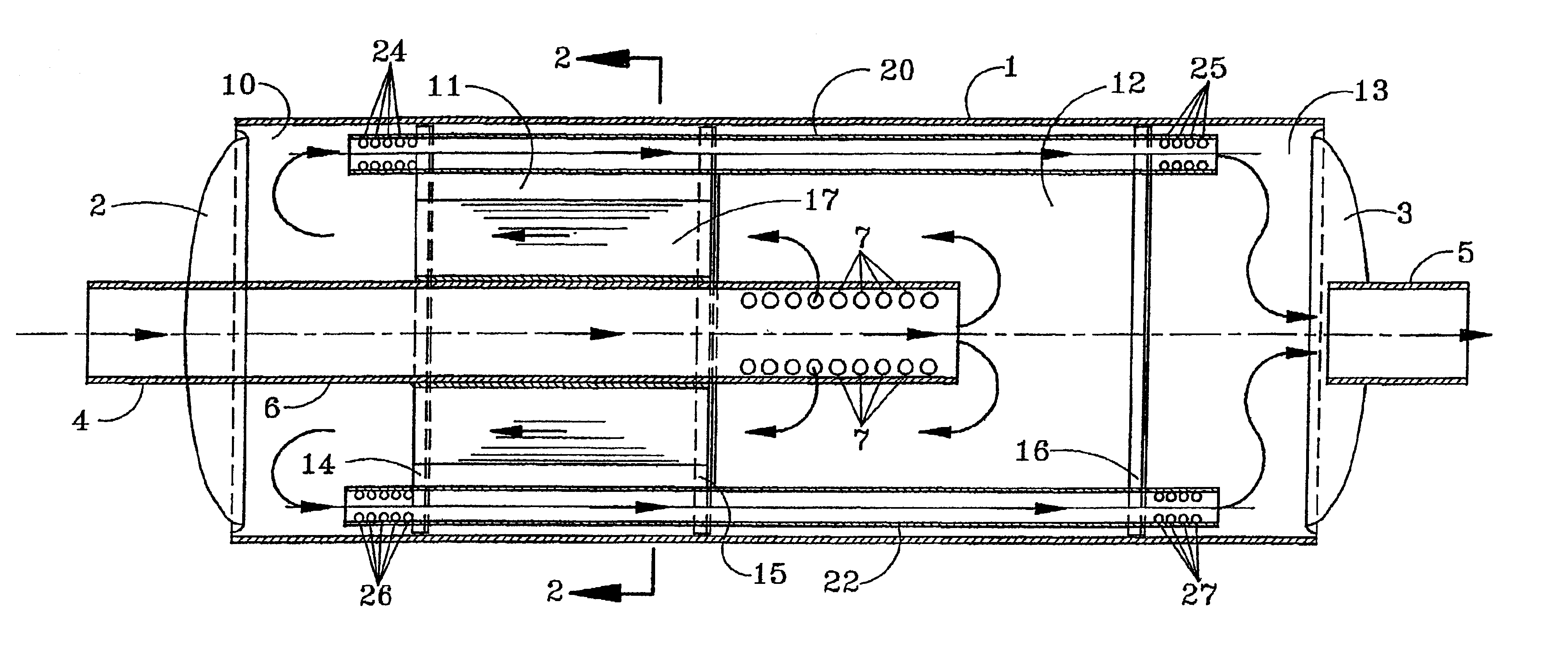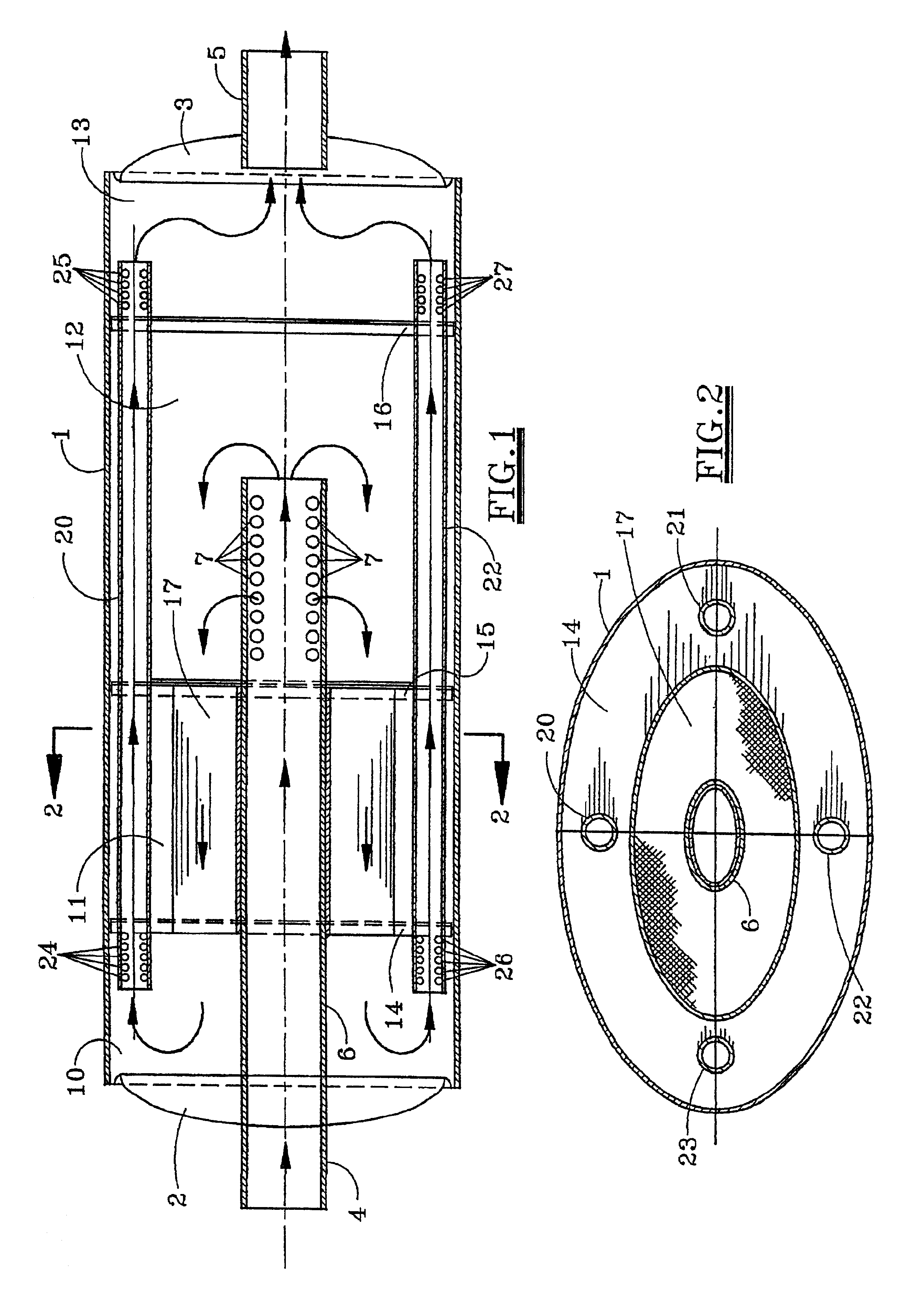Emission control apparatus
a technology of emission control and exhaust gas, which is applied in the direction of lighting and heating apparatus, machines/engines, and separation processes, etc., can solve the problems of increasing pressure drop, directing untreated exhaust gases to the atmosphere, and requiring frequent replacement of catalysts, so as to reduce noise and air pollution, improve the distribution of exhaust gas flow, and reduce noise.
- Summary
- Abstract
- Description
- Claims
- Application Information
AI Technical Summary
Benefits of technology
Problems solved by technology
Method used
Image
Examples
Embodiment Construction
[0026]Referring first to FIGS. 1 and 2, there is shown an apparatus for controlling emissions from an internal combustion engine. The apparatus is a combination noise and pollution control apparatus, particularly adapted for use with an automobile. It includes a cylindrical housing 1 closed at opposite ends by dished heads 2 and 3. The housing 1 can be cylindrical or, as in the preferred embodiment illustrated in FIGS. 1 and 2, of elliptical cross-section. If cylindrical, the heads 2 and 3 are semi-spherical. If elliptical, they are semi-elliptical in shape. The head 2 is provided with a single inlet 4 by which the apparatus may be connected to the exhaust (not shown) of an internal combustion engine (not shown). The opposite head 3 is provided with an outlet 5. The outlet 5 may be connected to a discharge pipe (not shown) or in the case of an automobile to the tailpipe (not shown). In the exemplary embodiment, the inlet 4 is formed by the end of a tubular member 6 which is coaxiall...
PUM
| Property | Measurement | Unit |
|---|---|---|
| diameter | aaaaa | aaaaa |
| pressure drop | aaaaa | aaaaa |
| pressure | aaaaa | aaaaa |
Abstract
Description
Claims
Application Information
 Login to View More
Login to View More - R&D
- Intellectual Property
- Life Sciences
- Materials
- Tech Scout
- Unparalleled Data Quality
- Higher Quality Content
- 60% Fewer Hallucinations
Browse by: Latest US Patents, China's latest patents, Technical Efficacy Thesaurus, Application Domain, Technology Topic, Popular Technical Reports.
© 2025 PatSnap. All rights reserved.Legal|Privacy policy|Modern Slavery Act Transparency Statement|Sitemap|About US| Contact US: help@patsnap.com


